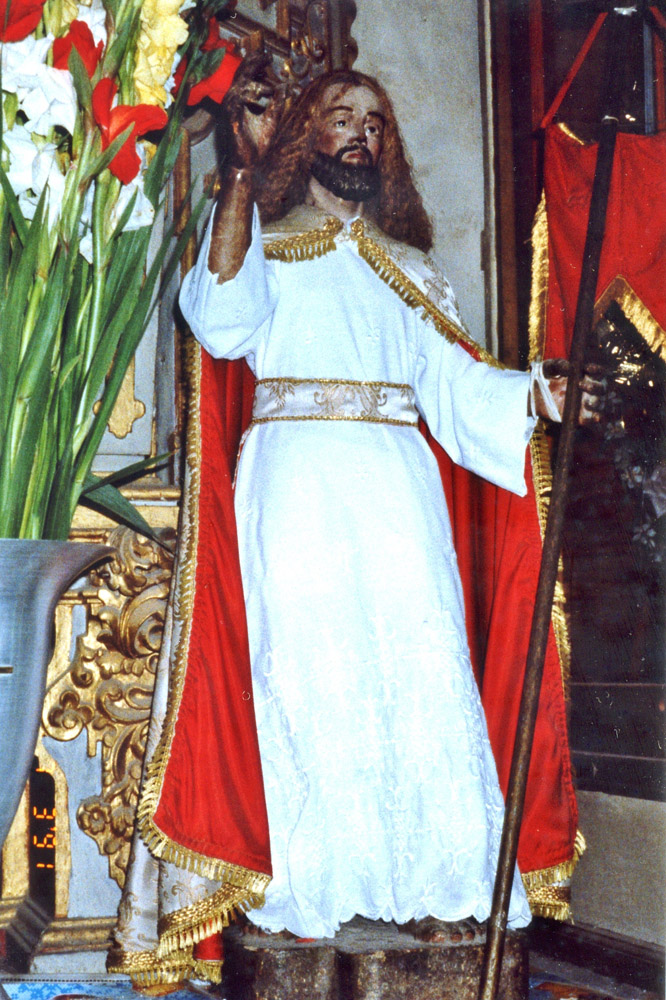Santos in Oaxaca's Ancient Churches
A study of santos in 16th-century and other churches in Oaxaca, Mexico


By Claire and Richard Stracke
Funded by a grant from the Rockefeller Foundation.
In Teotitlán del
Valle:
Christ
Child
Christ in a
coffin
Christ:
Ecce Homo
Crucifix (1)
Crucifix
(2)
Our Lady of Sorrows
Our
Lady of Sorrows (Soledad)
Our Lady of the
Rosary
Palm Sunday
Christ
Resurrection of Christ
St. Francis of
Assisi
St. Hyacinth
St. John the
Baptist
St. John the Evangelist
St. Joseph (?)
St. Mary Madgalene
St.
Peter the Apostle (1)
St.
Peter the Apostle (2)
St. Sebastian
Trinity
Unidentified
Franciscan saint
Virgin Mary (1)
Virgin Mary (2)
